The best Lensbaby and Lomography lenses: the best creative effect lenses
The best Lensbaby and Lomography lenses are built for the creative types and offer unique in-camera image effects
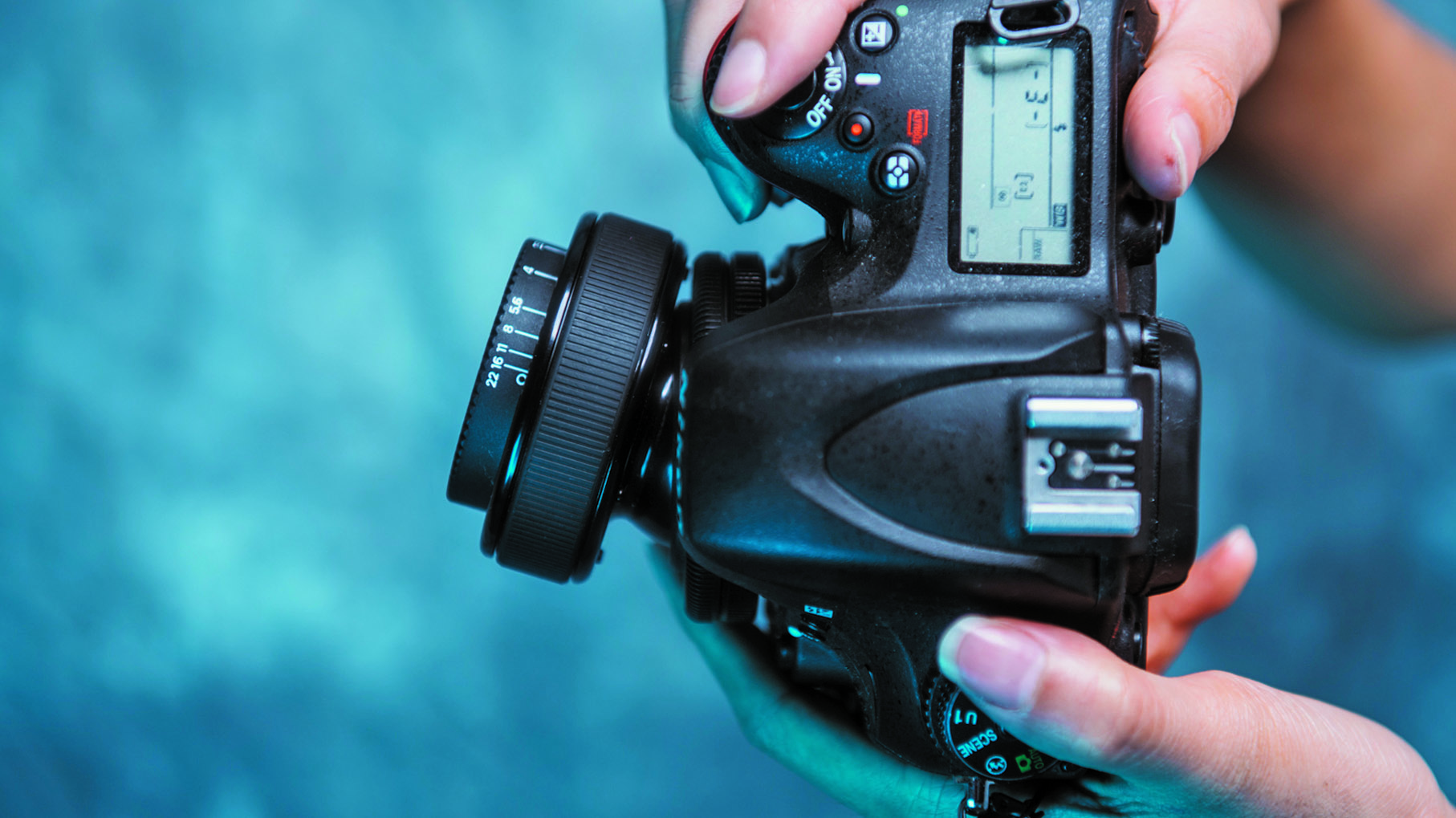
For striking images with a difference, the best Lensbaby and the best Lomography lenses are a great place to start. These lenses throw pixel-peeping out of the window in favor of fun, striking visual effects.
They allow you to create images with vivid bokeh, with a distinctive look, or with lo-fi visual effects, and they do so without the price tag of premium lenses. This has been a successful formula, to the point where both Lensbaby and Lomography have plenty of lenses available.
So how do you go about choosing one of these unique art lenses?
Start here
• The best camera lenses to buy
Which camera do you have?
• Best Canon lenses
• Best Fujifilm lenses
• Best Nikon lenses
• Best Olympus lenses
• Best Panasonic lenses
• Best Pentax lenses
• Best Sony lenses
Eye-catching effects
Why you can trust Digital Camera World
While Lensbaby and Lomography lenses are definitely different, there are a few things that remain constant. The meaning of a focal length hasn't wildly changed, so it makes sense that if you want to shoot subjects that are further away, you want a lens with a longer focal length. A good portrait lens should have an equivalent focal length of about 85mm, a good street lens will probably be at around 35mm, and a great landscape lens is wider than that. A wider maximum aperture is best for low light and creating shallow depth of field. All these things are just as true for specialist lenses as they are for regular ones.
But once you get into the specifics, that's where you find the charm of these lenses. Able to capture images with sweet spots of sharp focus and artfully blurred defocused areas, Lensbaby and Lomography have an extremely distinctive and recognisable aesthetic. Their retro charm makes their images immediately stand out from others, and if you want to mix it up and produce something with a little quirky charm, these are the kind of lenses you want to buy.
There are limits. Fundamentals of the design of Lensbaby and Lomography lenses prevents them from having modern features like autofocus. They offer a back-to-basics shooting experience, and if you're a little too accustomed to the instant convenience of digital photography, you may find them more trouble than they're worth. If, however, you're ready to put some effort into getting used to them, there's a lot of fun to be had here.
Five things to watch out for
1. Mounting concern
These lenses are available for specific mounts, so check before you buy. Lensbaby lenses tend to be a little more widely compatible, and newer ones are even available for newer mounts like Canon RF.
2. Manual focus
As mention, you shouldn't expect creature comforts like autofocus: all these lenses are completely manual, so you do all the work, but can take all the credit.
3. Maintain composure
Some of the special effects on offer here necessitate careful shot composition - don’t expect maximum visual pop right from the off. It's a far cry from point and shoot, that's for sure.
4. Modular systems
Lenses like the Lensbaby Edge 35 are designed to work with a separate housing - in this case, Lensbaby's Composer Pro II. This is great if you’ve got one, but it can get expensive you haven't. Make sure the box will have everything you need to start shooting before you click "buy".
5. Budget options
All our lenses use glass elements, but really cheap novelty lenses with plastic elements are out there if you want a uber low-grade look.
The best Lensbaby and Lomography lenses
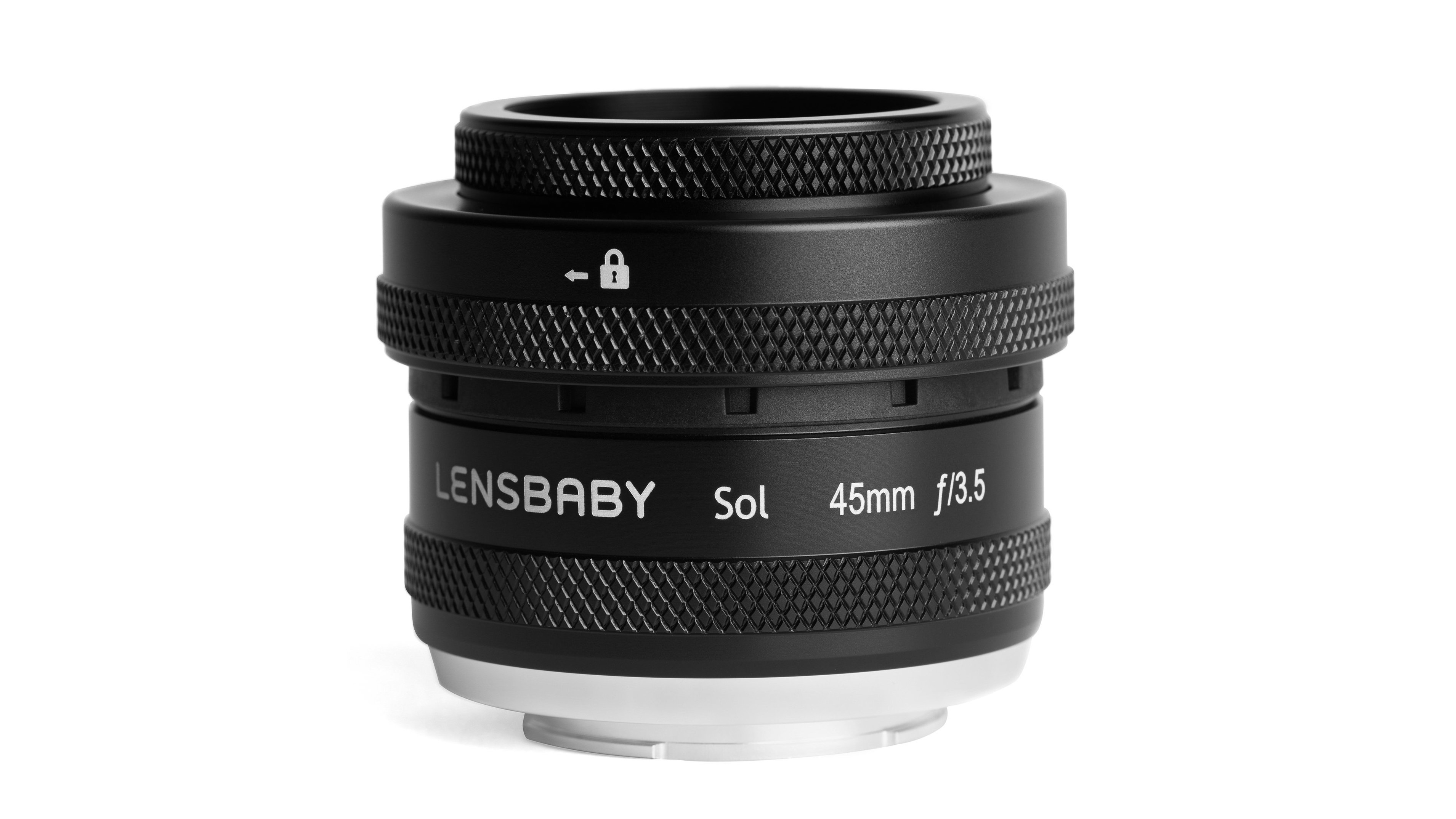
1. Lensbaby Sol 45
Our expert review:
Specifications
Reasons to buy
Reasons to avoid
The Sol 45 harks back to Lensbaby’s origins of simplicity and creativity, and, unlike the Edge 35, it doesn’t require an extra like the Composer Pro. The two lenses do still share a similar tilting feature that allows you to tilt the front section to any angle.
The idea is that you pick a subject within the frame, bend the lens towards it, then focus with the manual focus ring. Behind this is a larger ring which enables you to lock the sweet spot of sharpest focus in the centre of frame. Unlock this ring and focus can be shifted towards the edges of the frame. The aperture is fixed at a fairly large f/3.5, helping to produce a sharp circular region of focus around your chosen focal point, surrounded by stunningly smooth bokeh.
There’s also a pair of ‘bokeh blades’ that can be pulled across the lens to introduce some interesting texture to the out-of-focus areas. Mount the lens on a crop-sensor body and the focus sweet spot gets closer to the edges of frame, which can be handy with some compositions.
Peak image sharpness is no match for Lensbaby's Burnisde 35 optic, but chromatic aberration is minimal, and the Sol 45 produces very attractive and highly distinctive images for a very fair outlay.
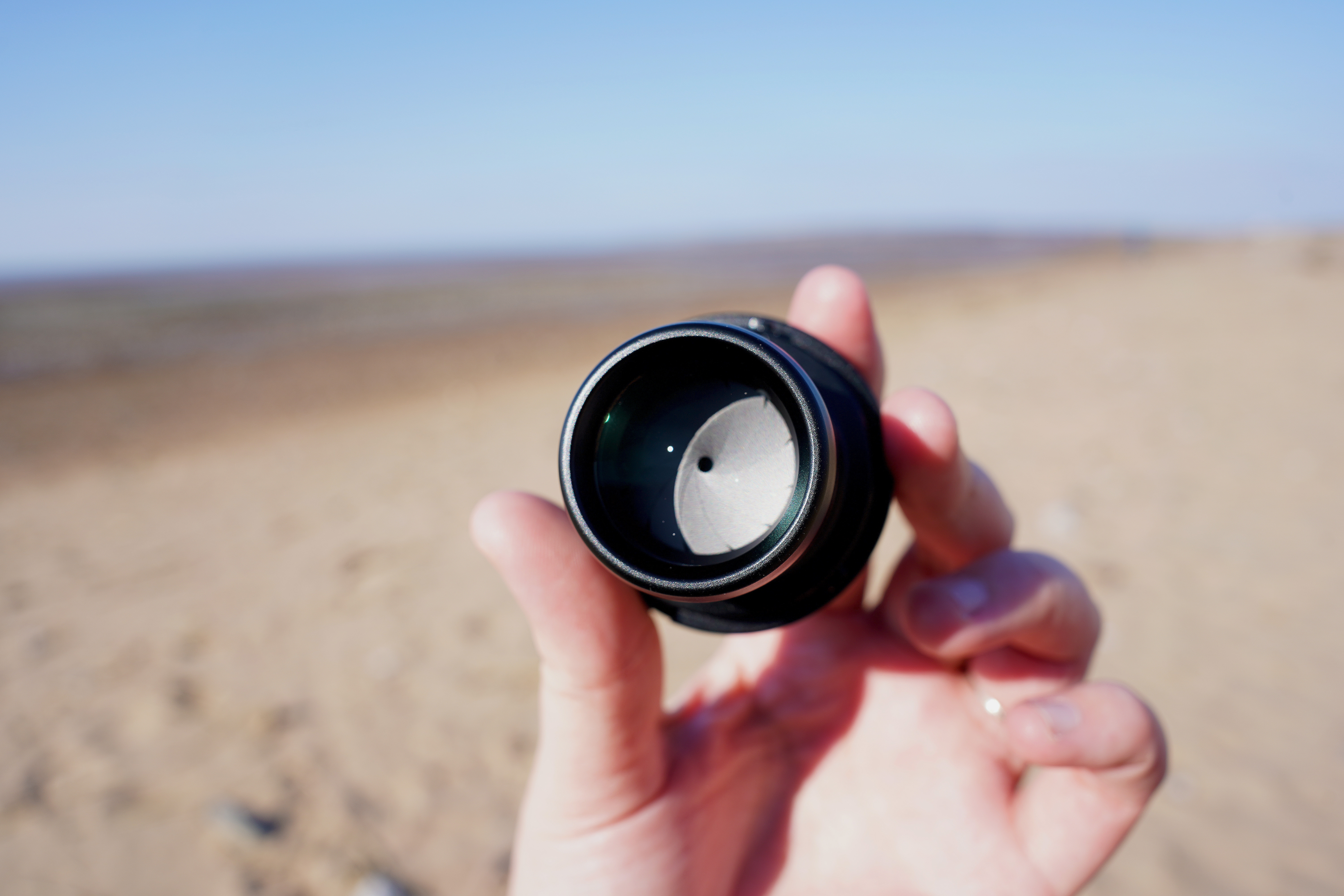
Specifications
Reasons to buy
Reasons to avoid
An excellent optic when paired with Lensbaby's Composer Pro II body, the Lensbaby Double Glass II offers unique points of focus with an adjustable bendy design that will allow you to really get creative and hands-on with where you want your focus to be, finding the ideal sweet spot.
For those of us who have always relied on autofocus, this lens is not an easy one to adjust to, being fully manual. But it does however make for a superb tilt shift lens when used correctly and can change the shape of bokeh for a novel affect using magnetic drop-in disks which are included with the optic as a bundle.
The Lensbaby Double Glass II Optic is a fantastic bit of kit for those who are looking to get super creative with their photography, find new inspiration, and to branch out to different genres and subject matter. Although, this lens might not suit someone who doesn't have a lot of patience, as it will take time to learn, understand, and experiment with to really discover what this optic can do and the best ways in which to use it.
• See our full review of the Lensbaby Double Glass II Optic
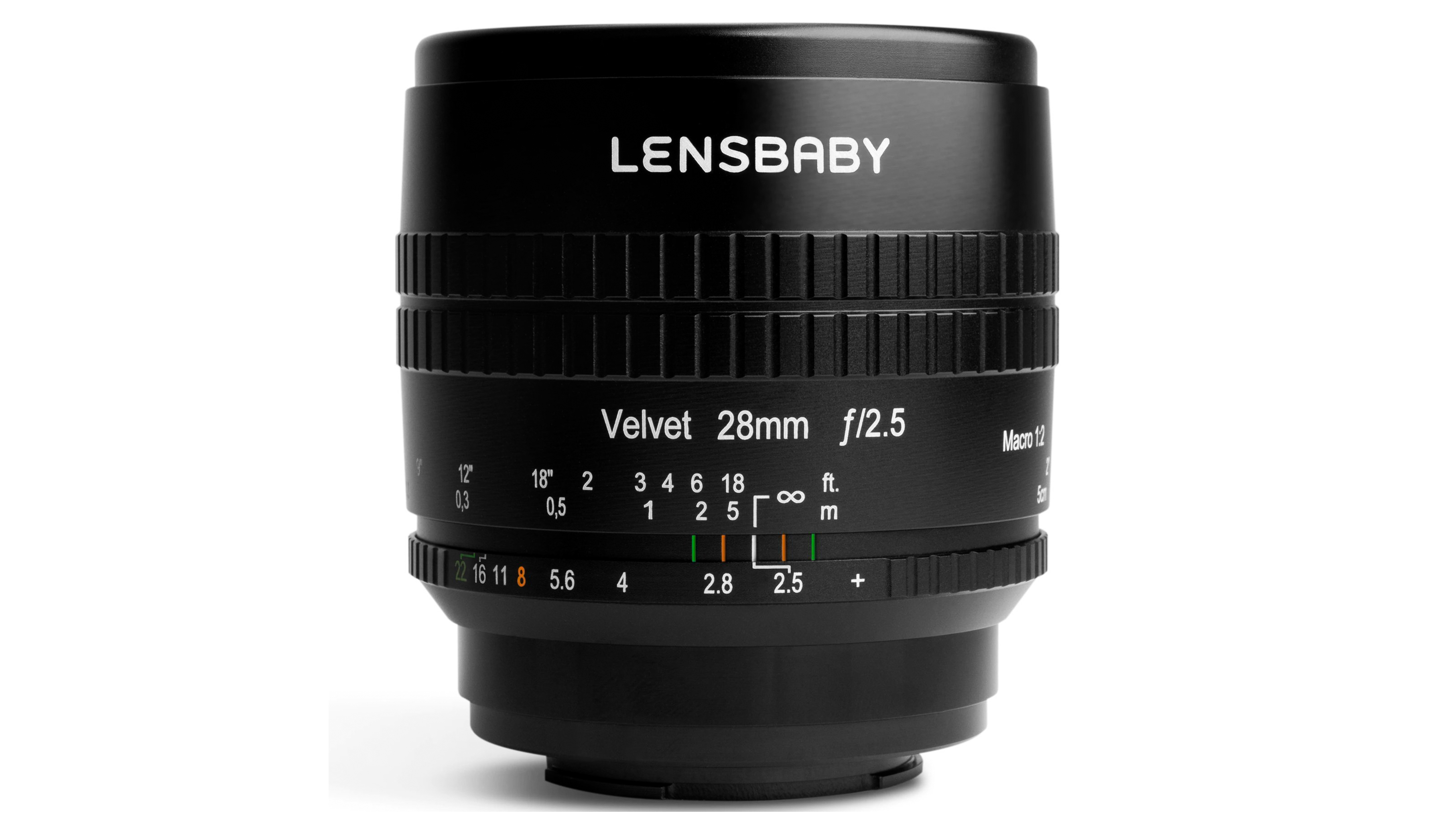
3. Lensbaby Velvet 28
Our expert review:
Specifications
Reasons to buy
Reasons to avoid
The Lensbaby Velvet 28 is the latest in a line of Velvet optics from the company, and if you have it come across it before, 'Velvet' is a synonym for 'soft focus'.
That's not to say the images you'll get are going to be out of focus. Instead, image detail should still be rendered tack-sharp, but your photos will benefit from a soft velvet glow that will permeate the image and intensify towards the edges.
Not only do you get this dreamy glow, but the Velvet 28 has another neat trick up its sleeve in the shape of its rather handy 1:2 macro capability. This means it can double as a useful close-up lens (with the same ethereal soft focus, if you so choose, or you can deactivate if you prefer). Nicely made as well with an all-metal construction, and while the long focus throw can make it a faff, this is a great lens if you're looking for something a little different.

4. Lensbaby Burnside 35
Our expert review:
Specifications
Reasons to buy
Reasons to avoid
Lensbaby’s quirky lenses have proved popular with photographers who want to apply creative effects at the shooting stage and make their images stand out from the crowd. The Burnside 35’s signature look is a bright, sharp central area surrounded by bokeh that has a swirl effect and prominent corner vignetting, making it an interesting proposition for portrait photographers.
Covering full-frame or crop sensors and available in Canon, Nikon, Fujifilm, Sony, Micro Four Thirds and Pentax mounts, the Burnside 35 looks quite old school, but its metal barrel and silky-smooth focusing action give it a high-quality feel. The long focus throw makes manual focusing a pleasure - a good thing, as like other Lensbaby optics, this is a completely manual lens with no electronic assistance.
To really get the most out of the Burnside, shoot wide open at f/2.8 with your subject close to the camera and well separated from a ‘busy’ background with plenty of texture to make the swirling bokeh effect really pronounced. There’s even a slider between the focus and aperture rings to simultaneously control vignetting intensity and the amount of bokeh swirl.
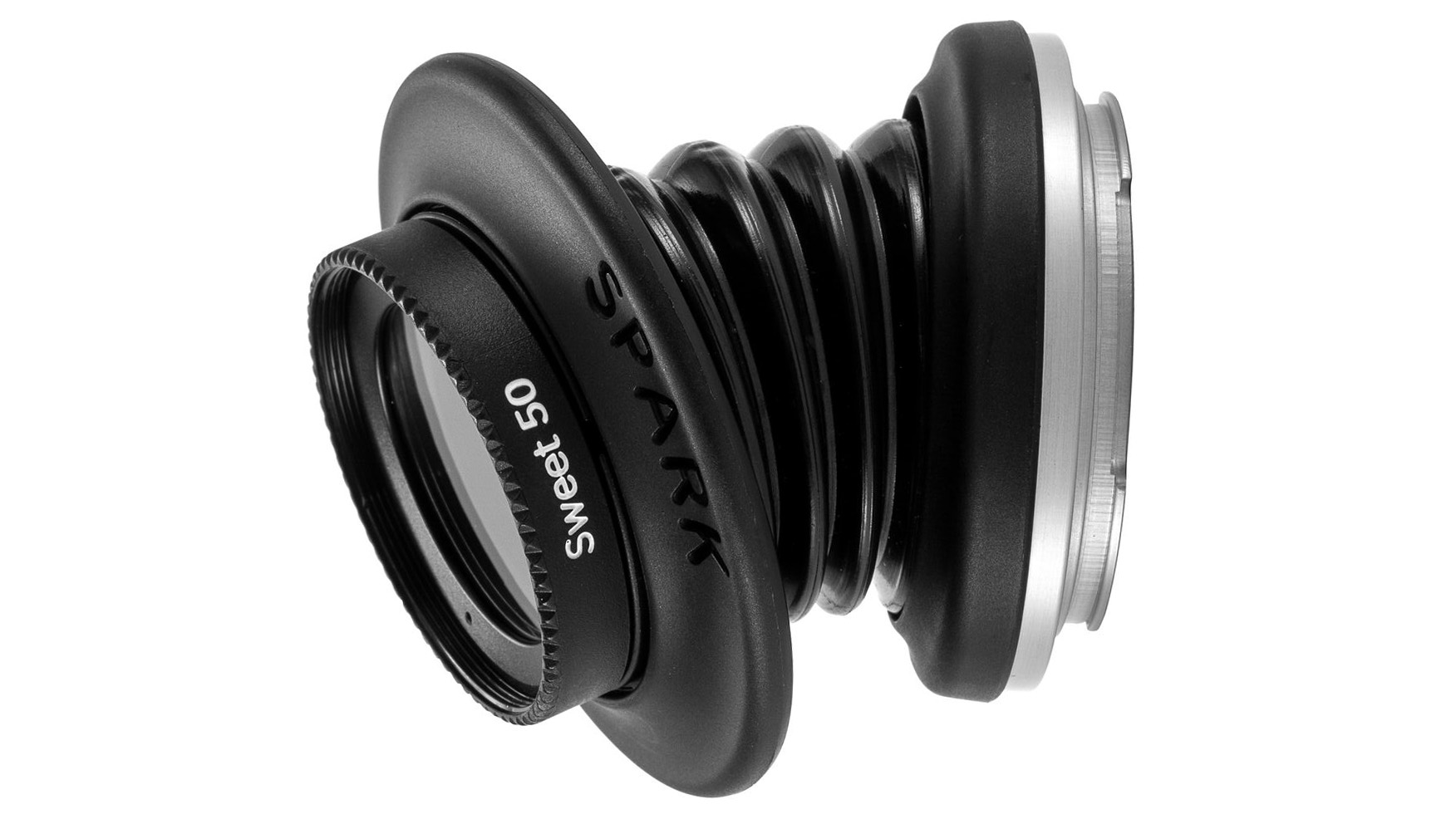
Specifications
Reasons to buy
Reasons to avoid
The Lensbaby Spark 2.0 combines a Sweet 50 (50mm) optic with a tilt-shift system that allows for creative effects. As is typical with Lensbaby, the lens makes it easy to create surreal, striking bokeh effects and portraits with a different. However, what's interesting about the Spark 2.0 is that the optic itself can actually be swapped out, opening up possibilities for different focal lengths. Want to try a Sweet 80 for more of a portrait look, or a Sweet 35 for architectural perspectives? You can!
The maximum aperture on the Spark 2.0 is f/2.5, representing a considerable improvement on the f/5.6 of the original Spark. The tactile feel of the lens mechanism makes it really satisfying to use – you use your fingers to manipulate and contort the body to get the image looking the way you want it to. So while you're not going to be acquiring focus especially quickly, doing that has never been the point of Lensbaby. If you're prepared to put in the work to learn it, you'll find the Lensbaby Spark 2.0 to be an immensely rewarding lens to use.
See our full Lensbaby Spark 2.0 review
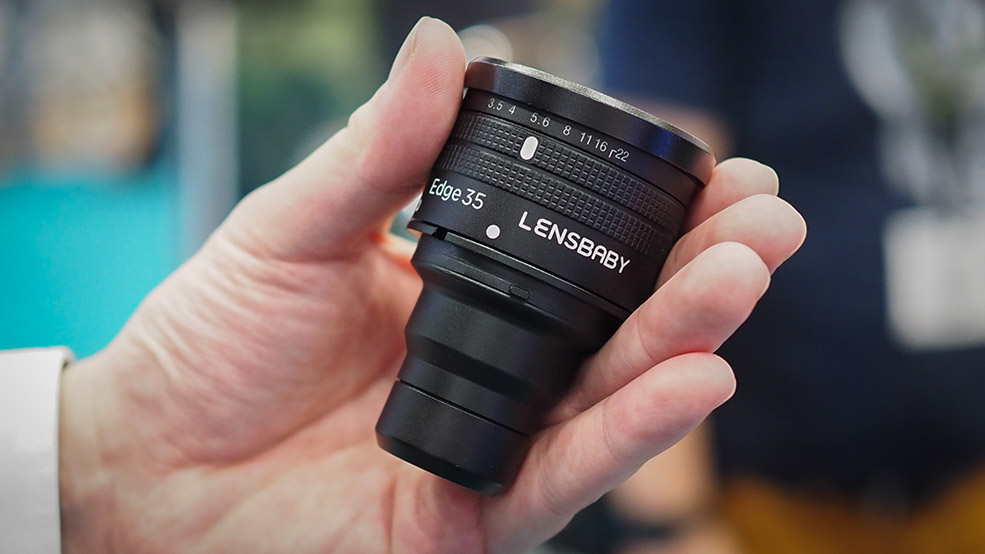
Specifications
Reasons to buy
Reasons to avoid
The 35mm Edge 35 is part of Lensbaby’s Optic Swap System and is designed to be used with the Composer Pro or Composer Pro II lens housing. Simply insert the Edge 35 into the housing and rotate clockwise. The Composer Pro’s ball and socket design then allows the Edge 35 to be tilted in any direction, and in doing so you move the plane of focus in the image, similar to the tilt element of a tilt-and-shift lens.
The result is a sharp band across the scene with near and far objects both being in focus. Tilting up or down creates a horizontal slice of focus, while tilting left or right gives a vertical slice, and tilting diagonally produces diagonal slices. A locking ring near the lens mount enables the movement to be tightened and loosened as required.
Built quality isn’t quite up there with the Burnside 35, but you still get a metal barrel and glass elements. Focusing is manual-only and controlled using the front ring on the Composer Pro, while the aperture ring can be found on the Edge 35 and runs from f/3.5 to f/22. With careful focusing, you can get impressively sharp results at the point of focus, with steep fall-off and attractive bokeh.
See our full Lensbaby Edge 35 review
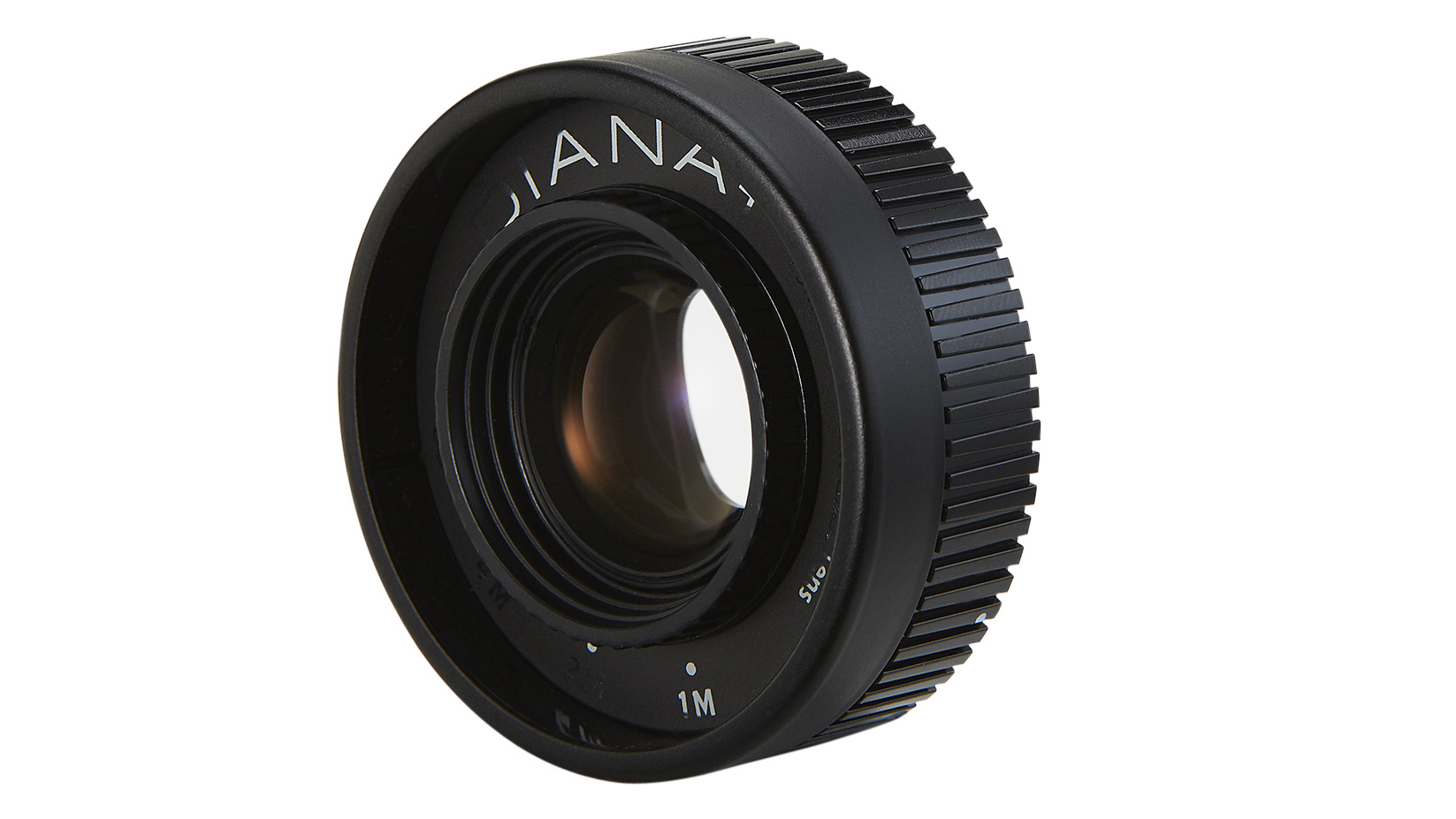
7. Lomography Diana+ 75mm Premium Glass
Our expert review:
Specifications
Reasons to buy
Reasons to avoid
Think ‘premium glass’ and you probably envisage pro-grade fluorite glass and ultra-low dispersion elements. This Diana Premium Glass lens has none of the above, but it is priced accordingly, and at least its three lens elements are glass, where similarly-priced lenses can be based around horrid plastic elements.
But sure enough, cost-cutting is evident in the Diana’s cheap-feeling plastic barrel and mount, and it requires a plastic mount adapter to attach the lens to a Canon or Nikon DSLR. That ‘premium’ glassware is put to good use though, as sharpness is on par with Lomography’s Petzval lens, and is actually not bad even without making allowances for the lens’s price. There’s also very little distortion and not much chromatic aberration either.
Focusing relies on a ridiculously positioned focus dial that requires you to reach into the front of the lens barrel, meaning you’re quite likely to smear the front element, but that could be a bonus when you’re trying to go maximum hipster with a soft focus look.
If you’re after a cheap lens that’ll help you learn the art of fully manual photography, this is a smart buy, although its high optical quality can ironically make it a little too good for seriously lo-fi images.
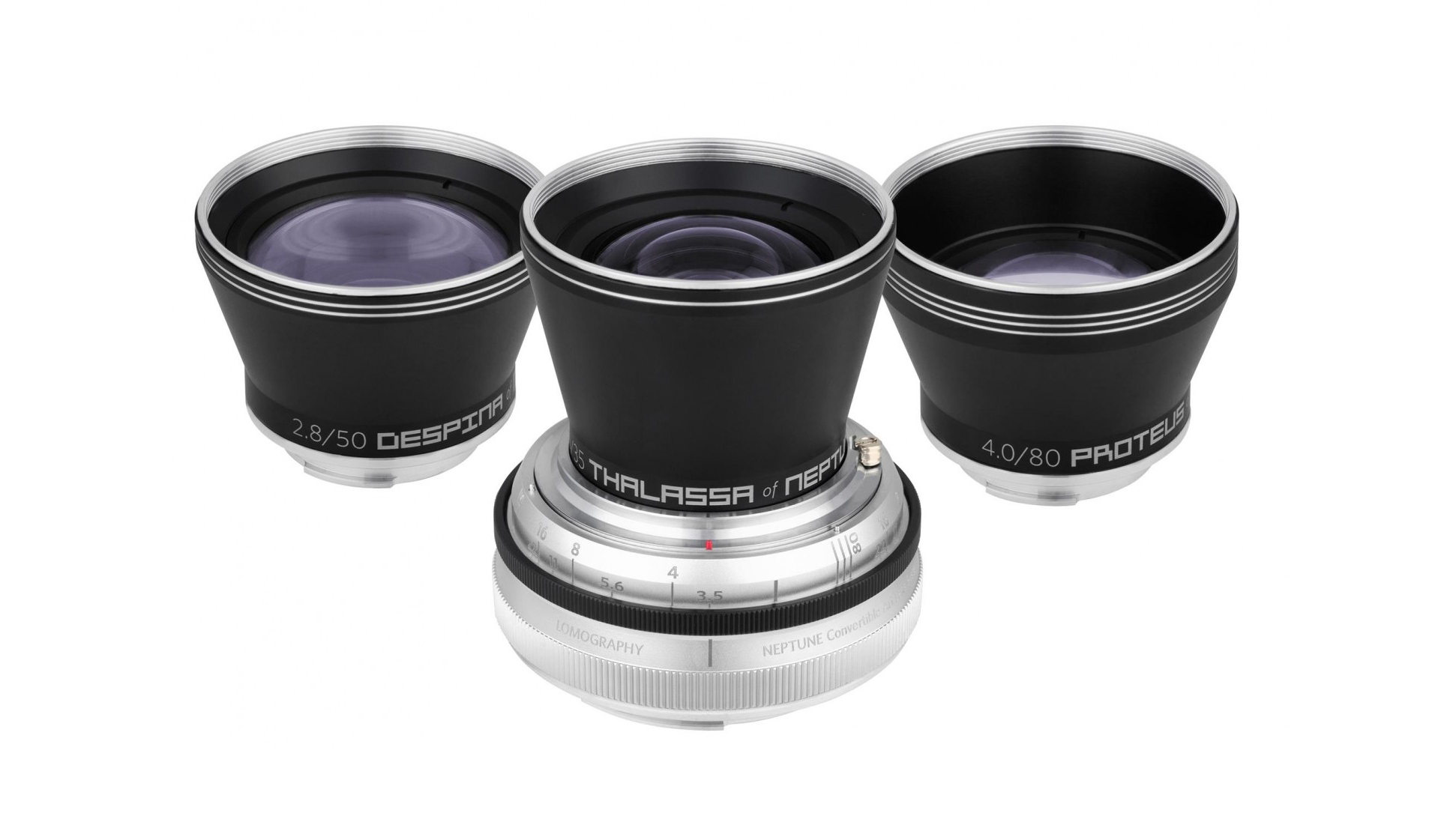
8. Lomography Neptune Convertible Art Lens System
Our expert review:
Specifications
Reasons to buy
Reasons to avoid
Here we have a modular lens system consisting of a base unit that attaches to your camera lens mount, which in turn serves as the foundation for three prime lenses. The base contains some of the optical elements, the diaphragm and focus ring, while the add-on lenses provide three different focal lengths. The Thalassa lens is a 35mm f/3.5; the Despina is a 50mm f/2.8; and the Proteus is an 80mm f/4.
Each add-on lens is very small, but then they’re also very basic. All are completely manual, so not only do you do the focusing, but you also have to manually control exposure metering. The add-on lenses are weighty and well-made, but the base unit feels crudely fashioned by comparison.
Fortunately all three lenses produce exceptional detail rendition, insignificant distortion, hardly any vignetting and very little chromatic aberration. Manual focusing is simple and almost immediate, and the total lack of electronic assistance also lets you learn how under- and over-exposure can produce attractive creative effects.
It’s hard to make a case for the Neptune system on price and specs alone, but it does score more highly on fun factor and helping you maximise your creativity.
Read more:
The best Lomography camera
The best fisheye lenses
The best film cameras
The best macro lens
The best 50mm lenses
The best Canon portrait lenses
The best Nikon portrait lenses
Lomography Petzval 55mm f/1.7 MKII review
The best camera deals, reviews, product advice, and unmissable photography news, direct to your inbox!
Ben is the Imaging Labs manager, responsible for all the testing on Digital Camera World and across the entire photography portfolio at Future. Whether he's in the lab testing the sharpness of new lenses, the resolution of the latest image sensors, the zoom range of monster bridge cameras or even the latest camera phones, Ben is our go-to guy for technical insight. He's also the team's man-at-arms when it comes to camera bags, filters, memory cards, and all manner of camera accessories – his lab is a bit like the Batcave of photography! With years of experience trialling and testing kit, he's a human encyclopedia of benchmarks when it comes to recommending the best buys.
- Beth NichollsFreelance contributor

